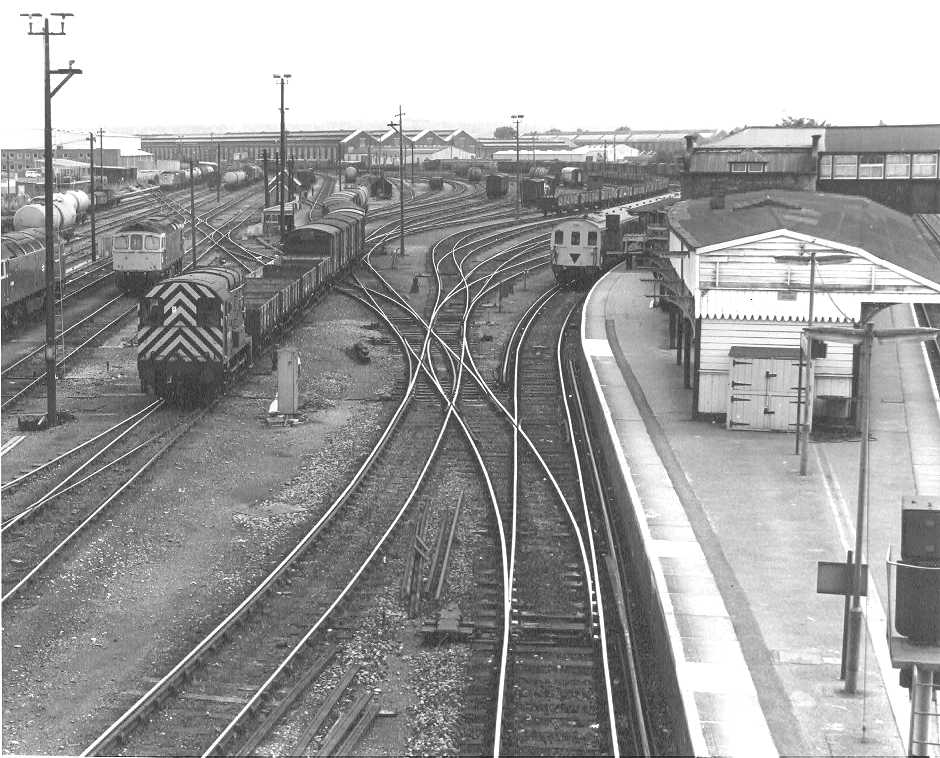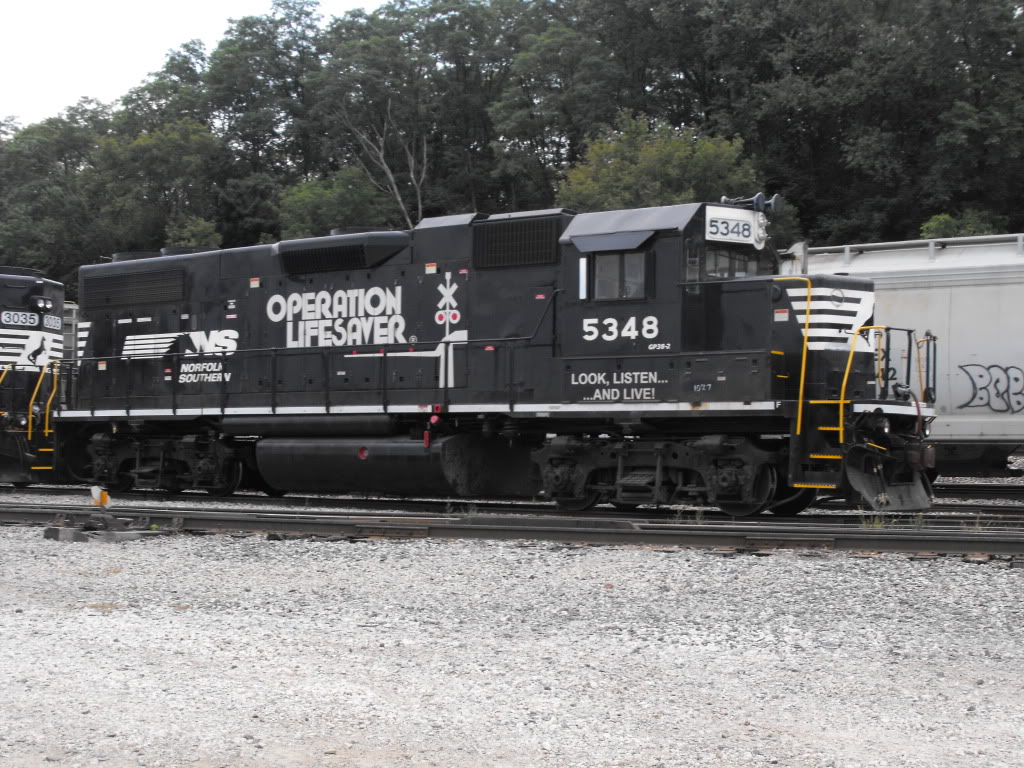|
C69 Stock
The London Underground C69 and C77 Stock, commonly referred to as the C Stock, was a type of sub-surface rolling stock used on the Circle, District and Hammersmith & City (formerly Metropolitan) lines of the London Underground between 1970 and 2014. They were replaced by the S7 Stock. History In 1968, C69 stock 6-car trains were ordered from Metro-Cammell of Washwood Heath to replace O Stock and P Stock on London Underground's Circle and Hammersmith & City lines for delivery from 1969, but trials of a four-car unit were delayed until summer 1970. They first entered service on 28 September 1970. The C69 stock was constructed using the then-standard form of a load-bearing aluminium underframe with a non-load-bearing body of riveted panels on aluminium framing. The high-density nature of the Circle line service meant that loading times were important; consequently all cars were fitted with four double sets of air-operated sliding doors per side. Seating was mainly transverse, ... [...More Info...] [...Related Items...] OR: [Wikipedia] [Google] [Baidu] |
High Street Kensington Tube Station
High Street Kensington is a London Underground station on Kensington High Street, Kensington. It is served by the Circle and District lines and is located in Travelcard Zone 1. On the Circle line, the station is between Gloucester Road and Notting Hill Gate stations. On the Edgware Road branch of the District line, it is between Earl's Court and Notting Hill Gate stations. Kensington Arcade forms the entrance to the station. Station layout The station itself has four platforms─two through platforms and two bay platforms. Platform 1 is used for anticlockwise Circle line and westbound District line trains towards Gloucester Road and Earl's Court respectively. Platform 2 is for clockwise Circle line and eastbound District line trains towards Edgware Road. Platforms 3 and 4 are used for terminating District line trains from Earl's Court. Platform 3 is usually used for the Olympia service, which runs weekends and for special events, and platform 4 is usually only used at ... [...More Info...] [...Related Items...] OR: [Wikipedia] [Google] [Baidu] |
London Underground Infrastructure
The railway infrastructure of the London Underground includes 11 lines, with 272 stations. There are two types of line on the London Underground: services that run on the sub-surface network just below the surface using larger trains, and the deep-level tube lines, that are mostly self-contained and use smaller trains. Most of the lines emerge on the surface outside the Central London area. The oldest trains currently in service on the Underground are 1972 Stock trains on the Bakerloo line. The Underground is electrified using a four-rail system, the DC traction supply being independent of the running rails. Planned improvements include new stations, line extensions and more lines with automatic train operation (ATO). Railway The total length of railway on the London Underground is and made up of the sub-surface network and the deep-tube lines. In 1971/72 it was re-measured in kilometres using Ongar as the zero point. Sub-surface network and deep-level tube lines The Circl ... [...More Info...] [...Related Items...] OR: [Wikipedia] [Google] [Baidu] |
Eastleigh Works
Eastleigh Works is a locomotive, carriage and wagon building and repair facility in the town of Eastleigh, in the county of Hampshire in England. History LSWR The London and South Western Railway (LSWR) opened a carriage and wagon works at Eastleigh in 1891. In 1903, the Chief Mechanical Engineer, Dugald Drummond, oversaw the construction of a large motive power depot in the town; replacing the existing maintenance and repair shops at Northam, Southampton. In January 1910, locomotive building was likewise transferred to the new workshops at Eastleigh from Nine Elms Locomotive Works, Nine Elms in London. The first locomotives built at Eastleigh were the two LSWR S14 class, S14 delivered in September 1910, and these were followed by Eastleigh's first tender locomotives, the five LSWR P14 class, P14 , delivered between October 1910 and February 1911. Among the other locomotives produced by the LSWR under Drummond at Eastleigh, were the LSWR M7 Class, M7 0-4-4 tank engines, the L ... [...More Info...] [...Related Items...] OR: [Wikipedia] [Google] [Baidu] |
Derby Litchurch Lane Works
Derby Litchurch Lane Works, formerly Derby Carriage and Wagon Works, is a railway rolling stock factory in Derby, England. It is presently owned by the multinational transportation manufacturer Alstom. Derby works originally commenced production of rolling stock on behalf of its owner, the Midland Railway, during the mid 1840s as the direction of Matthew Kirtley, the company's first Locomotive and Carriage Superintendent. Due to its expansion, it was split into the Midland Railway Locomotive Works and the newer ''Carriage and Wagon Works during 1873. In the 1910s, amid the First World War, production techniques at the works were drastically overhauled, greatly reducing the manhours involved in producing carriages amongst other things; the works was also involved in the manufacture of various goods for the British military. During 1923, the Midland Railway, and thus the Derby works, became part of the London, Midland and Scottish Railway. During the Second World War, the Derby wo ... [...More Info...] [...Related Items...] OR: [Wikipedia] [Google] [Baidu] |
Rheostatic Brake
Dynamic braking is the use of an electric traction motor as a generator when slowing a vehicle such as an electric or diesel-electric locomotive. It is termed " rheostatic" if the generated electrical power is dissipated as heat in brake grid resistors, and " regenerative" if the power is returned to the supply line. Dynamic braking reduces wear on friction-based braking components, and regeneration lowers net energy consumption. Dynamic braking may also be used on railcars with multiple units, light rail vehicles, electric trams, trolleybuses, and electric and hybrid electric automobiles. Principle of operation Converting electrical energy to the mechanical energy of a rotating shaft (electric motor) is the inverse of converting the mechanical energy of a rotating shaft to electrical energy (electric generator). Both are accomplished through the interactions of armature windings with a (relatively) moving external magnetic field, with the armature connected to an electrical c ... [...More Info...] [...Related Items...] OR: [Wikipedia] [Google] [Baidu] |





